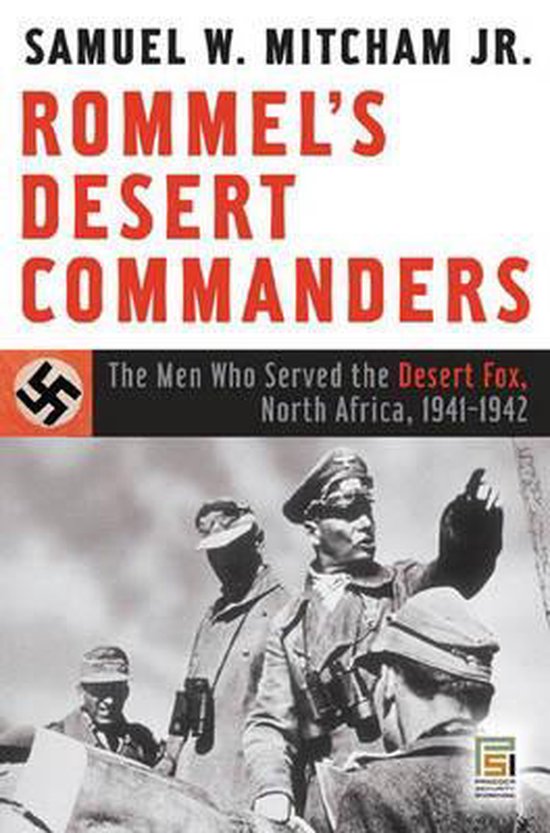Rommel's Desert Commanders
- Titel:
- Rommel's Desert Commanders
- Subtitel:
- The Men Who Served the Desert Fox, North Africa, 1941-1942
- ISBN13:
- 9780275994365
- Schrijver:
- Mitcham Jr., S. W.
- Druk:
- 1e druk
- Aantal pagina's:
- 214
- Uitgever:
- Praeger Security International
- Plaats van uitgifte:
- Westport, United States
- Jaar van uitgifte:
- 2007
- Beschrijving:
- Perhaps the most famous and admired soldier to fight in World War II was Field Marshal Erwin Rommel, who achieved immortality as the Desert Fox. Rommel's first field command during the war was the 7th Panzer Division—also known as the Ghost Division—which he led in France in 1940. During this campaign, the 7th Panzer suffered more casualties than any other division in the German Army, at the same time inflicting a disproportionate number of casualties upon the enemy. It took 97,486 prisoners, captured 458 tanks and armored vehicles, 277 field guns, 64 anti-tank guns and 4,000 to 5,000 trucks. It captured or destroyed hundreds of tons of other military equipment, shot down 52 aircraft, destroyed 15 more aircraft on the ground, and captured 12 additional planes. It destroyed the French 1st Armored Division and the 4th North African Division, punched through the Maginot Line extension near Sivry, and checked the largest Allied counteroffensive of the campaign at Arras. When France surrendered, the Ghost Division was within 200 miles of the Spanish border. No doubt about it—Rommel had proven himself a great military leader who was capable of greater things. His next command, in fact, would be the Afrika Korps, where the legend of the Desert Fox was born. Rommel had a great deal of help in France—much more than his published papers suggest. His staff officers and company, battalion, and regimental commanders were an extremely capable collection of military leaders that included 12 future generals (two of them SS), and two colonels who briefly commanded panzer divisions but never reached general rank. They also included Colonel Erich von Unger, who would no doubt have become a general had he not been killed in action while commanding a motorized rifle brigade on the Eastern Front in 1941, as well as Karl Hanke, a Nazi gauleiter who later succeeded Heinrich Himmler as the last Reichsfuehrer-SS. No historian has ever recognized the talented cast of characters who supported the Desert Fox in 1940. No one has ever attempted to tell their stories. This book remedies that deficiency.



